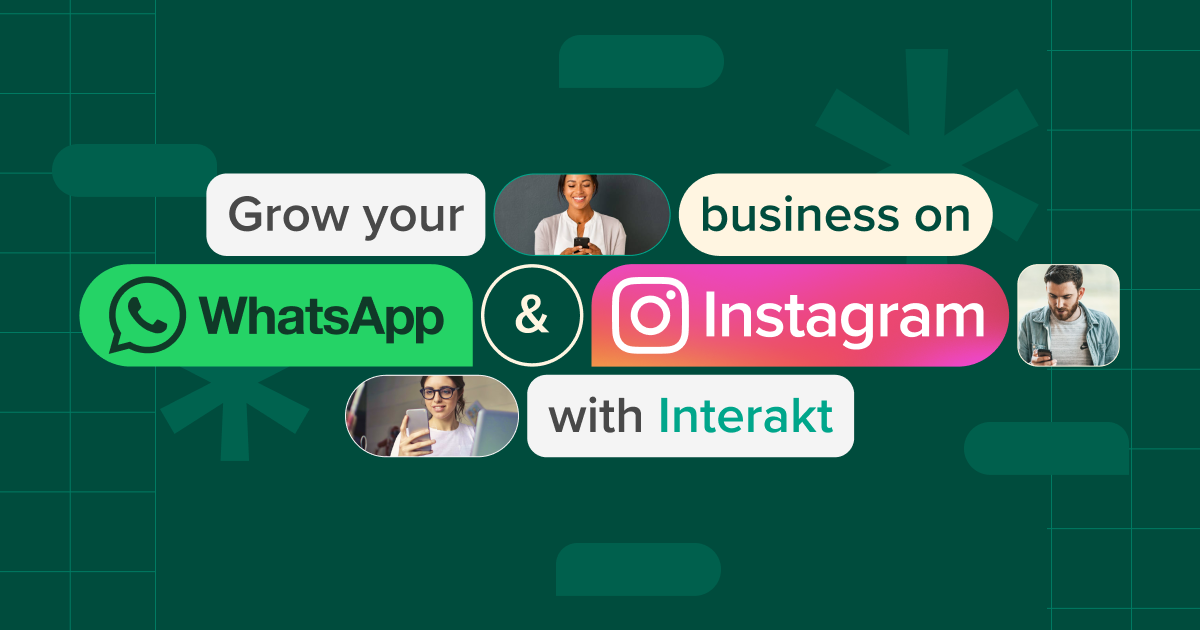WhatsApp has become an essential communication tool for businesses worldwide. As part of its business offerings, WhatsApp provides two primary options for companies looking to leverage its platform: the free WhatsApp Business API and the paid WhatsApp API plans. Understanding the key differences between these two options is essential for businesses aiming to maximize the benefits of WhatsApp communication without overspending.
WhatsApp API Free vs Paid Plans Explained
WhatsApp’s Business API allows businesses to send notifications, respond to customer queries, and engage in personalized communication at scale. While the free plan can be a great starting point, larger or more established businesses may find that the paid plans offer greater flexibility and features.
In this article, we’ll break down the WhatsApp API free vs paid plans in detail, covering pricing, features, benefits, and key differences to help you make an informed decision on which plan suits your business needs best.
Free WhatsApp API Plan Overview
The free WhatsApp API plan offers businesses an entry point into utilizing the platform’s capabilities without the need for an upfront investment. This plan is especially attractive for smaller businesses or startups that want to explore WhatsApp API’s potential for customer engagement without committing to paid options.
However, while the free WhatsApp API plan sounds appealing, it comes with certain limitations that businesses must be aware of. For starters, businesses using the free API plan will generally face restrictions on the number of messages they can send each month and the types of messages they can use. In most cases, free users can only send service-related messages, such as appointment reminders or order updates, and can engage customers within a 24-hour window after an initial message is sent.
Key Features of the Free WhatsApp API Plan:
1. Limited Number of Messages: Typically, the free plan offers a limited number of monthly messages (e.g., 1,000 messages/month).
2. Service Conversations Only: Businesses are primarily restricted to sending service-based messages such as confirmations, alerts, or reminders.
3. No Access to Marketing Conversations: Marketing messages, like promotional offers, are usually off-limits under the free plan. To send marketing messages, an upgrade to a paid plan is necessary.
Limited Access to Features: Some advanced features, such as custom message templates and automation, are not available on the free plan.
For small businesses with lower message volume or those just starting with WhatsApp API, this free option can be a good way to test the waters and explore the platform’s features. It allows businesses to engage customers through WhatsApp without bearing the costs associated with higher-tier plans.
Paid WhatsApp API Plan Overview
The paid WhatsApp API plan offers a more flexible and robust solution for businesses that need more extensive features, greater scalability, and the ability to send a broader range of message types. For businesses that need to send promotional or marketing messages, or that require a higher volume of messages each month, the paid plan is typically the better choice.
In the paid plan, businesses are given the freedom to engage with customers on a much larger scale. Additionally, businesses can create more personalized customer experiences, thanks to the expanded features offered by WhatsApp’s Business API.
Key Features of the Paid WhatsApp API Plan:
1. Unlimited Messages: Paid plans often provide a higher volume of messages or even unlimited messaging, depending on the pricing tier.
2. Access to Marketing Conversations: Businesses can send promotional messages, newsletters, and updates to customers outside the 24-hour window. This feature is critical for marketing strategies.
3. Custom Message Templates: Paid users can create custom templates for specific types of messages, such as order confirmations, ticket updates, or customer service inquiries.
4. Advanced Automation: Paid plans generally come with automation features, allowing businesses to set up bots, triggers, and workflows to respond to customer queries automatically.
5. Access to Analytics: With a paid WhatsApp API plan, businesses gain access to detailed analytics and reporting features, allowing them to track message delivery, open rates, and other key performance indicators.
Paid plans are especially suitable for mid-to-large businesses, eCommerce stores, or customer support teams that need advanced functionality and more room to scale.
Paid WhatsApp API Plan Overview
One of the unique aspects of WhatsApp API pricing is its reliance on different conversation types, each with its own pricing structure. The WhatsApp Business API divides conversations into four main types: Service Conversations, Marketing Conversations, Utility Conversations, and Authentication Conversations. The cost for each of these varies based on factors such as message type, customer engagement, and region.
1. Service Conversations
These are messages that businesses send in response to customer inquiries within the 24-hour window. They typically include things like order confirmations, updates, or customer service interactions. Service conversations are often free or come at a low cost, making them a popular choice for businesses with limited budgets.
2. Marketing Conversations
Marketing conversations are those that businesses send to engage customers for promotional purposes, such as sending discounts, new product offers, or newsletters. These conversations incur a higher cost because they are considered non-urgent or non-transactional, which is why they are typically only available with a paid WhatsApp API plan.
3. Utility Conversations
Utility conversations are messages related to transactional services like bill payments, appointments, or utility service alerts. These conversations usually cost more than service conversations but less than marketing ones. They play a significant role in industries like utilities, healthcare, and finance.
4. Authentication Conversations
These conversations involve sending verification codes or two-factor authentication (2FA) messages to customers. These types of messages are crucial for ensuring secure communication, and they are typically offered at a different price point depending on the volume and region.
The pricing for each of these conversation types varies by country and service provider, but it’s crucial for businesses to understand the cost implications of each when planning their communication strategies.
Key Differences Between Free and Paid WhatsApp API Plans
The most significant differences between the free and paid WhatsApp API plans lie in features, scalability, and pricing flexibility. The free plan is designed for small businesses with limited needs, while the paid plan caters to larger businesses that require more flexibility and advanced tools.
1. Message Volume and Conversation Types
The free WhatsApp API plan typically allows businesses to send only a limited number of messages per month and restricts them to service-related conversations. In contrast, paid plans offer unlimited or higher-volume messaging and access to marketing, utility, and authentication messages.
2. Advanced Features
The paid plans come with advanced features like custom message templates, advanced automation (bots), reporting tools, and detailed analytics. These features are essential for businesses looking to scale and optimize their customer interactions.
3. Customization and Templates
Paid users have the ability to create custom message templates for different scenarios, whether transactional or promotional. These templates streamline communication and ensure that businesses can respond quickly and professionally.
4. Cost Considerations
The free plan helps businesses keep costs low by restricting usage, while the paid plans offer more flexibility but come at a higher price point. The cost of the paid plan can depend on factors such as the number of messages sent, the type of conversation, and the country in which the business operates.
How to Choose the Right WhatsApp API Plan for Your Business
Choosing the right WhatsApp API plan for your business depends on your specific communication needs, budget, and growth goals. Here are some factors to consider when selecting the best plan for your business:
1. Evaluate Your Message Volume
If you’re a small business that only needs to send a few messages each month, the free WhatsApp API plan may be sufficient. However, if you anticipate sending a higher volume of messages or need to send marketing content, a paid plan would be more suitable.
2. Consider Your Customer Interaction Strategy
Think about the nature of your business interactions. Are they mostly transactional (e.g., order confirmations, support inquiries)? If so, the free plan may meet your needs. But if you’re planning to run marketing campaigns, the paid plan is necessary.
3. Scalability
If you’re growing your business or expect a surge in customer interactions, the paid plan offers scalability. Consider upgrading to a paid plan if you foresee significant growth in your messaging volume.
4. Budget
While the free plan is cost-effective, it’s essential to weigh the trade-offs in terms of functionality and flexibility. Paid plans can be an investment that pays off with features like automation, detailed reporting, and the ability to send marketing messages.
5. Geographical Considerations
Regional pricing differences play a major role in WhatsApp API costs. Depending on where your business operates, the cost of the paid plan may vary significantly. Make sure to assess the local pricing before making a decision.
Common Pitfalls to Avoid with WhatsApp API Pricing
Although WhatsApp API is an excellent tool for businesses, there are several common pitfalls to be aware of when it comes to pricing:
1. Misunderstanding the Conversation Window
Businesses may assume that once a conversation is started, they can continue engaging without limitations. However, service conversations must happen within a 24-hour window of the customer’s first message, which could lead to additional costs if not properly managed.
2. Not Optimizing the Free Plan’s Limitations
The free plan can be quite restrictive in terms of message volume and types. Not understanding these limitations could cause businesses to reach their monthly quota faster than expected and be forced to upgrade prematurely.
3. Overusing Marketing Conversations
Marketing conversations are much more expensive than service-based messages. Businesses should avoid overusing them, especially if they are on a paid plan, to manage costs effectively.
4. Neglecting Regional Variations
WhatsApp API pricing varies by region. Businesses operating in multiple countries may not be aware of these pricing variations and could face higher-than-expected costs if they don’t account for geographical differences.
5. Failure to Track Costs Effectively
Without tracking your usage and analyzing how many service vs. marketing messages you’re sending, it’s easy to overspend on a paid plan. Regular monitoring is key to maintaining cost efficiency.
Conclusion
Pricing calculators are essential tools for businesses that want to ensure they are using WhatsApp API in a cost-effective manner. Whether you’re just starting or looking to optimize your usage, these tools allow you to forecast costs, compare plans, and make strategic decisions about your communication needs.
By utilizing these tools, you’ll gain valuable insights into how to scale your operations without overspending, ensuring that WhatsApp remains an affordable and powerful business communication channel.






